I needed to make some new concrete sculpting tools. I cut the bristles from a dog brush and glued them to the handle from a sponge 🤞
The small bronze root left a stain on the seat. Oops. I expect I can grind it out.
Work work work
Your Custom Text Here

I needed to make some new concrete sculpting tools. I cut the bristles from a dog brush and glued them to the handle from a sponge 🤞
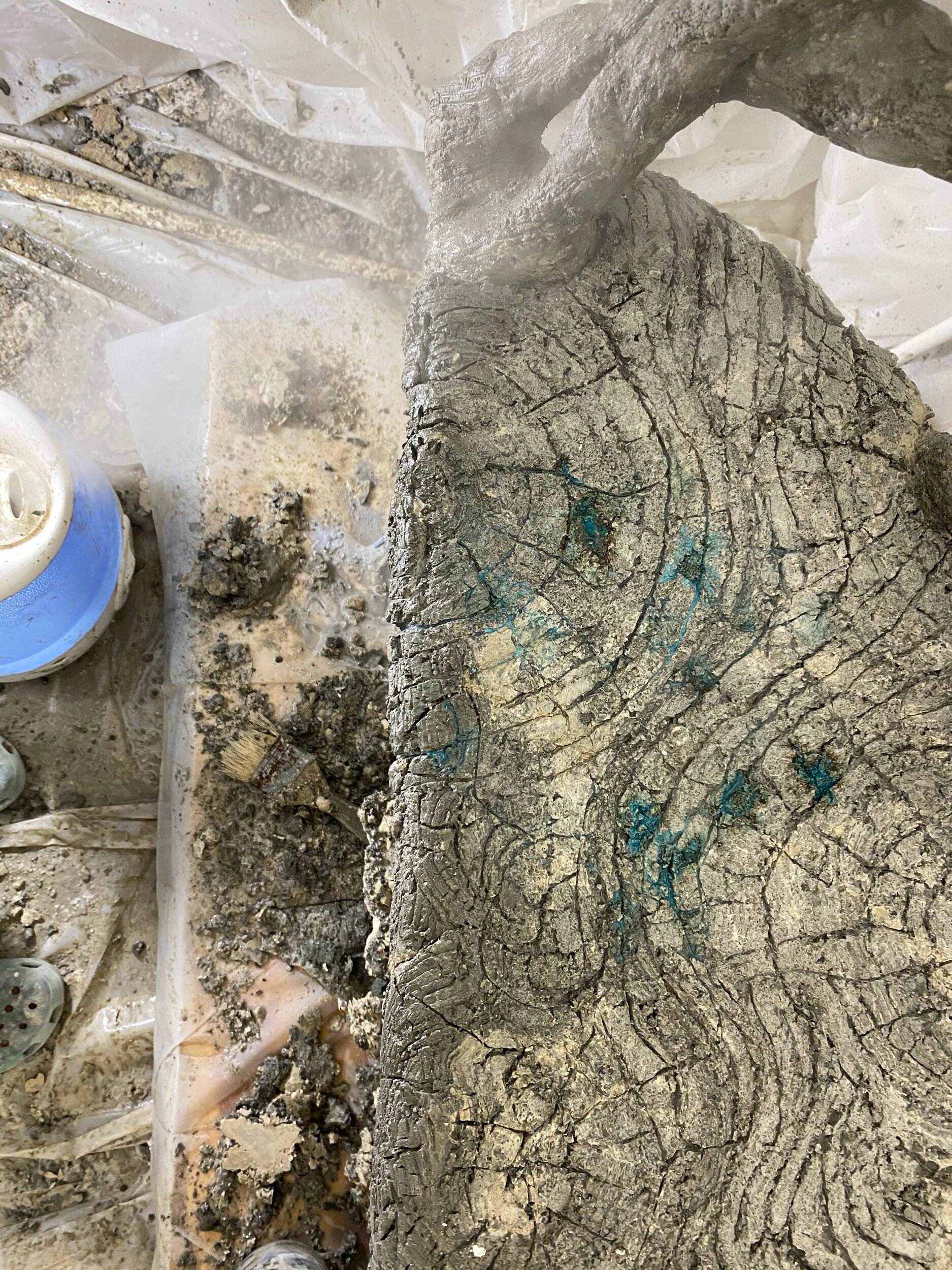
The small bronze root left a stain on the seat. Oops. I expect I can grind it out.

Work work work

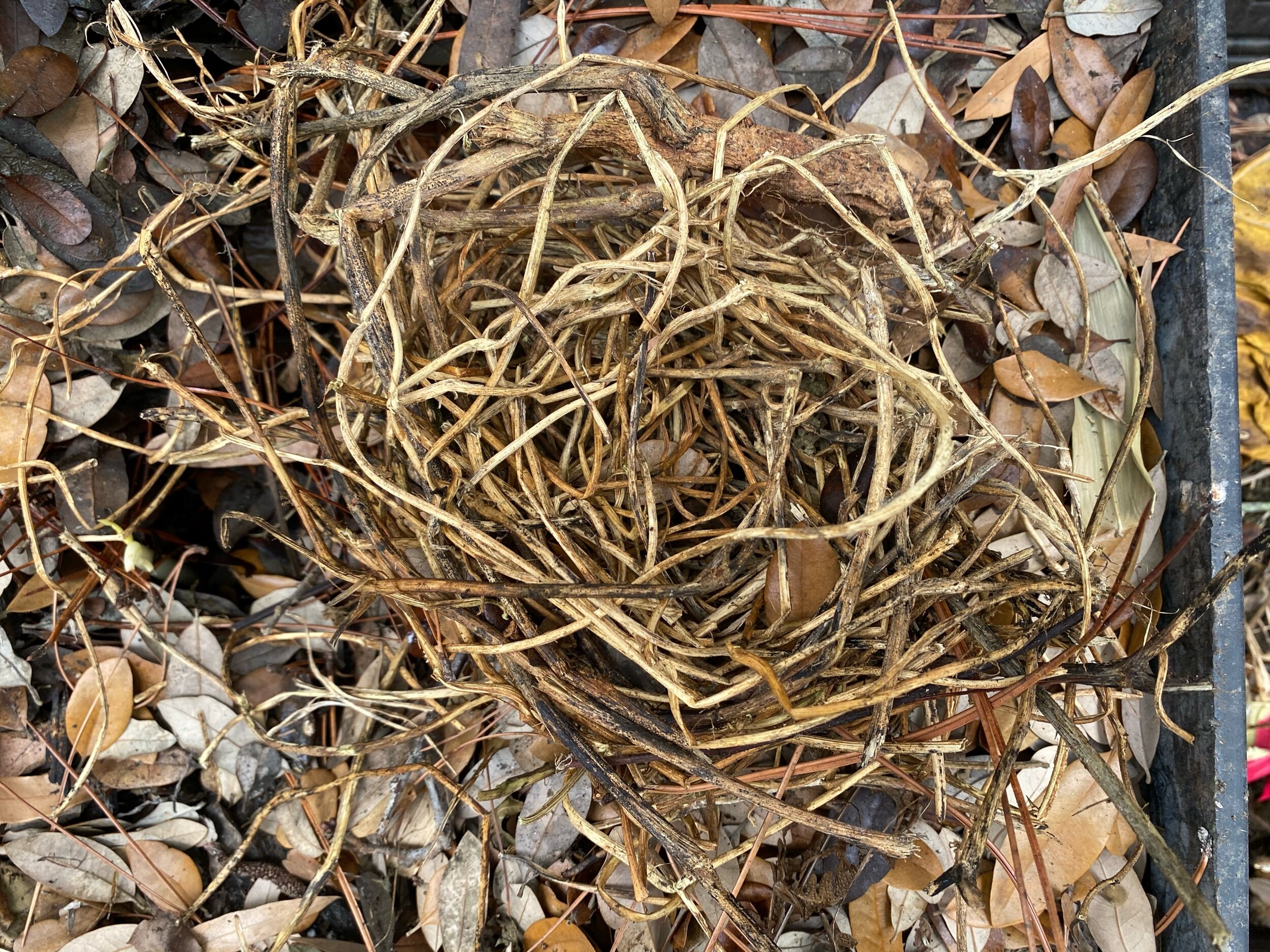
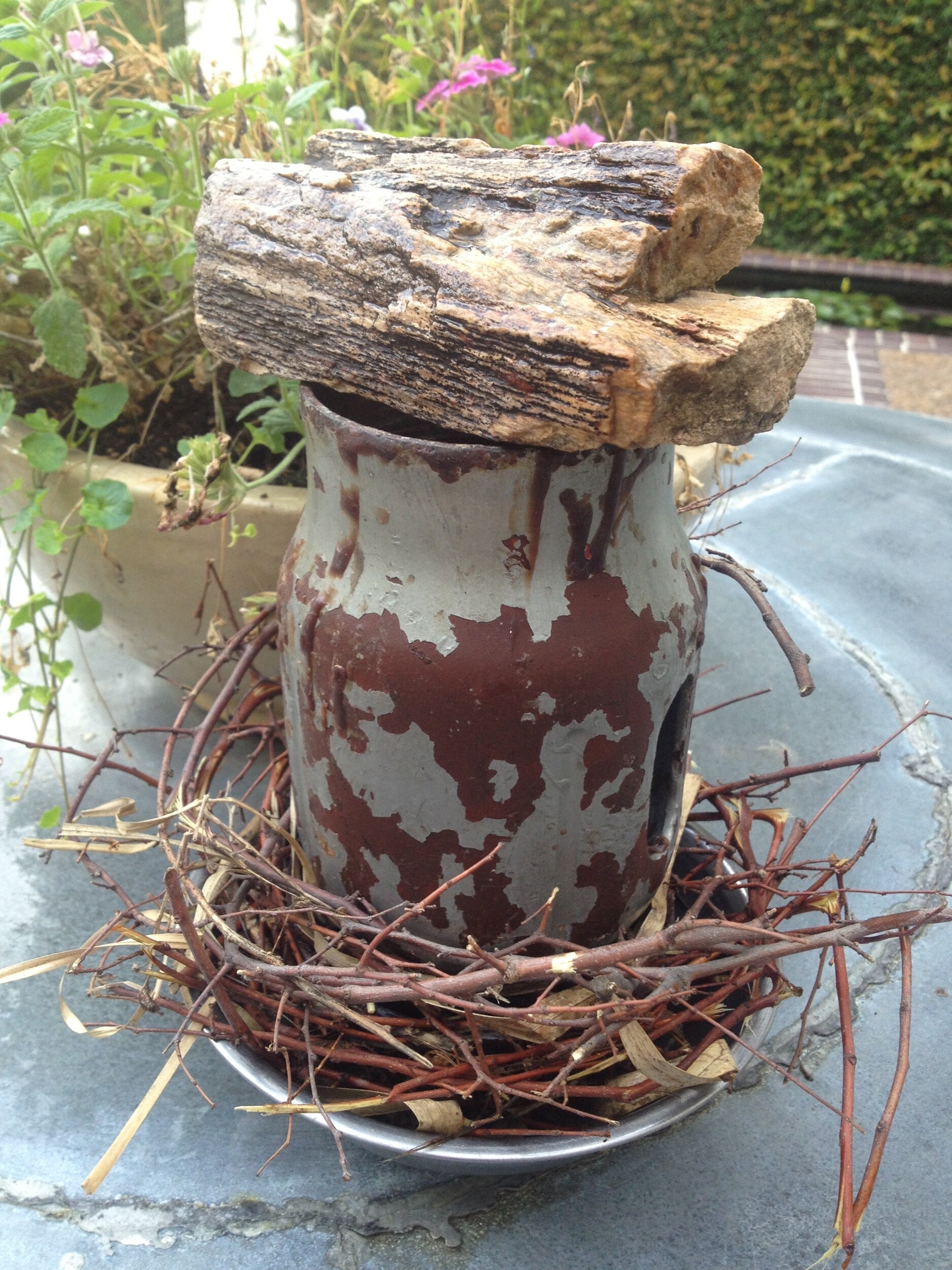
Shaping the dried organic matter.


Creating a system to get bronze into the sculpture.
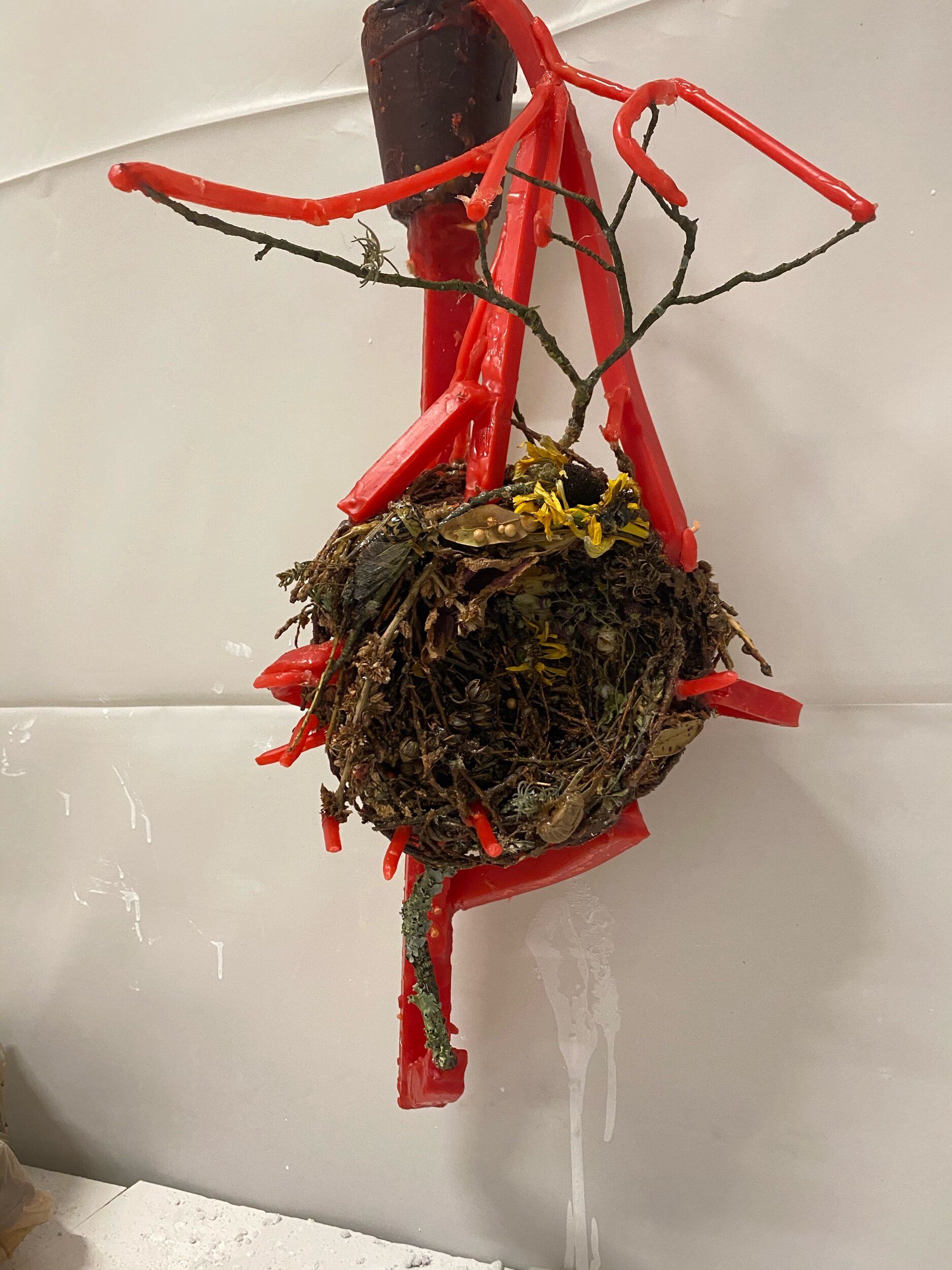
The best with the wax sorue system.
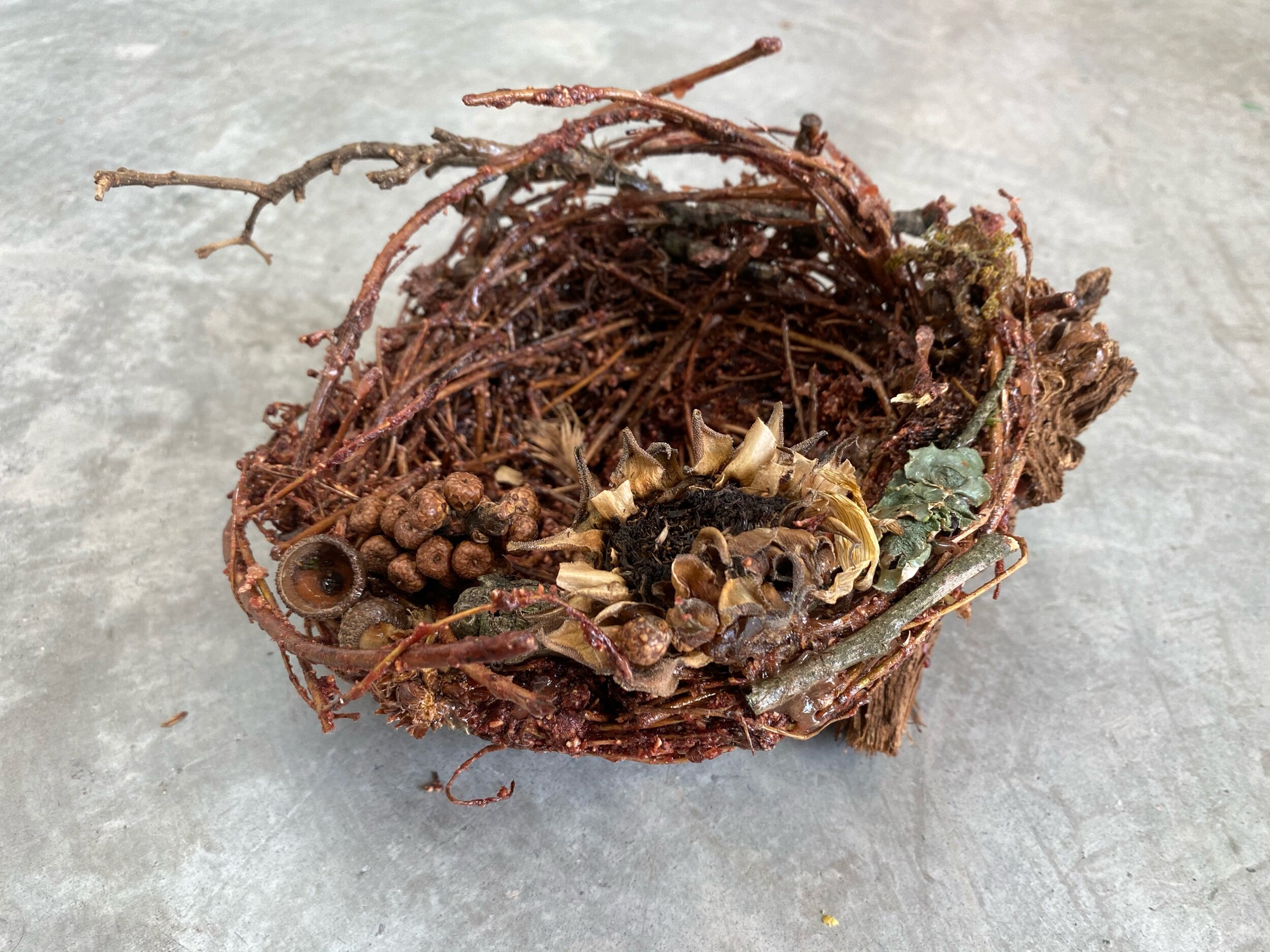

The sprue system after the first dip in slurry.
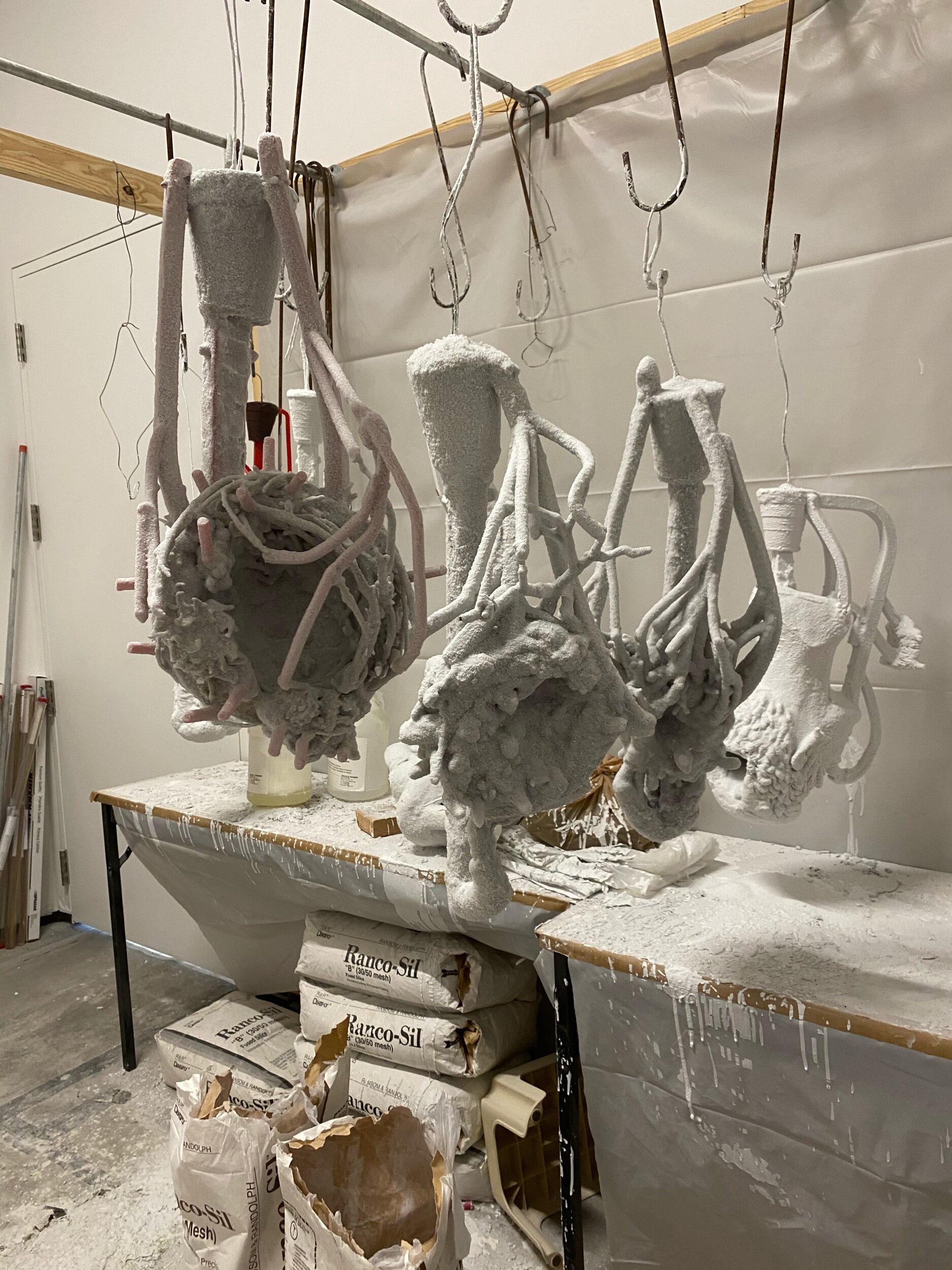
All three pieces after several dips.
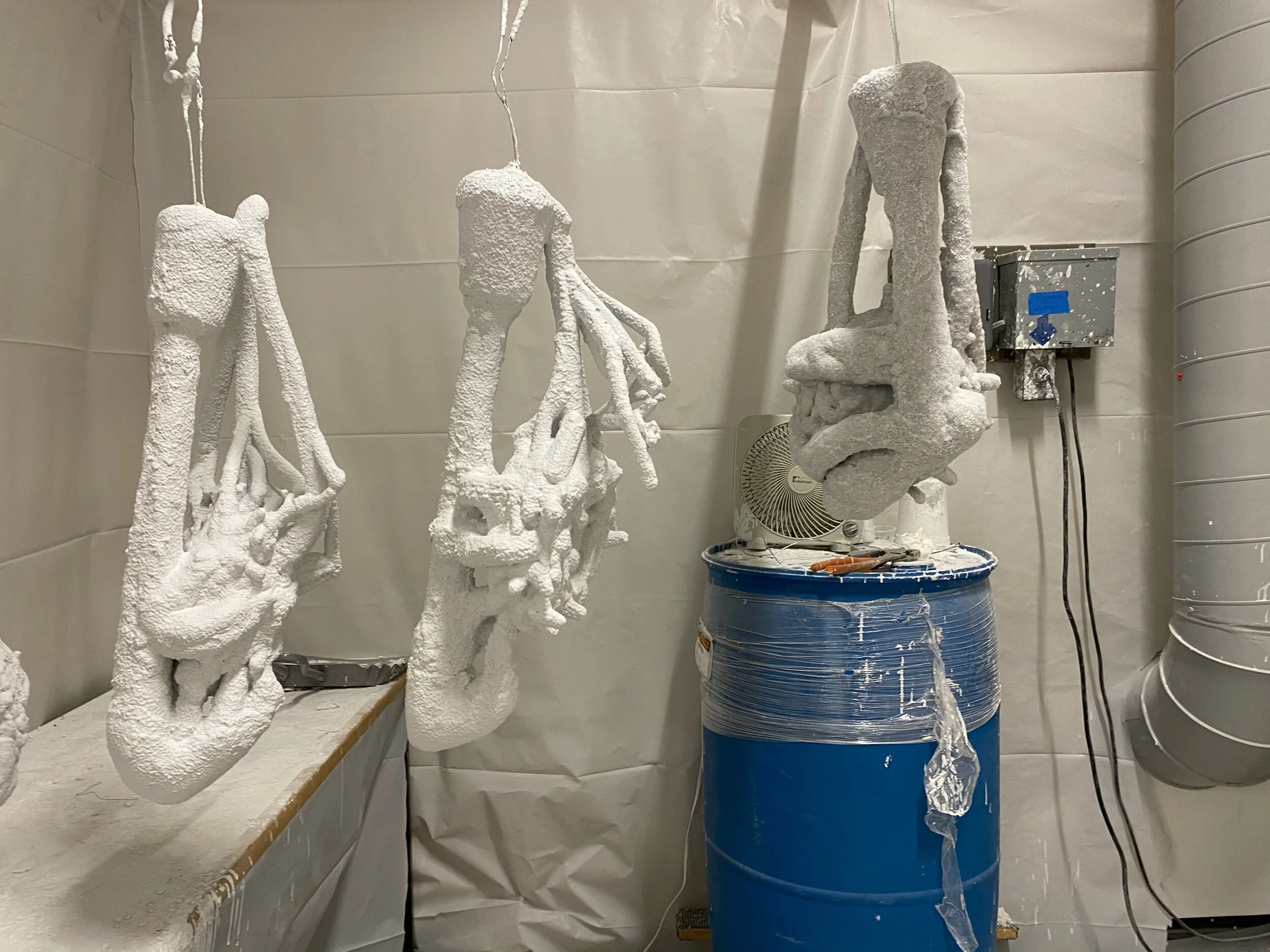
Drying after the last dip to build the shell.
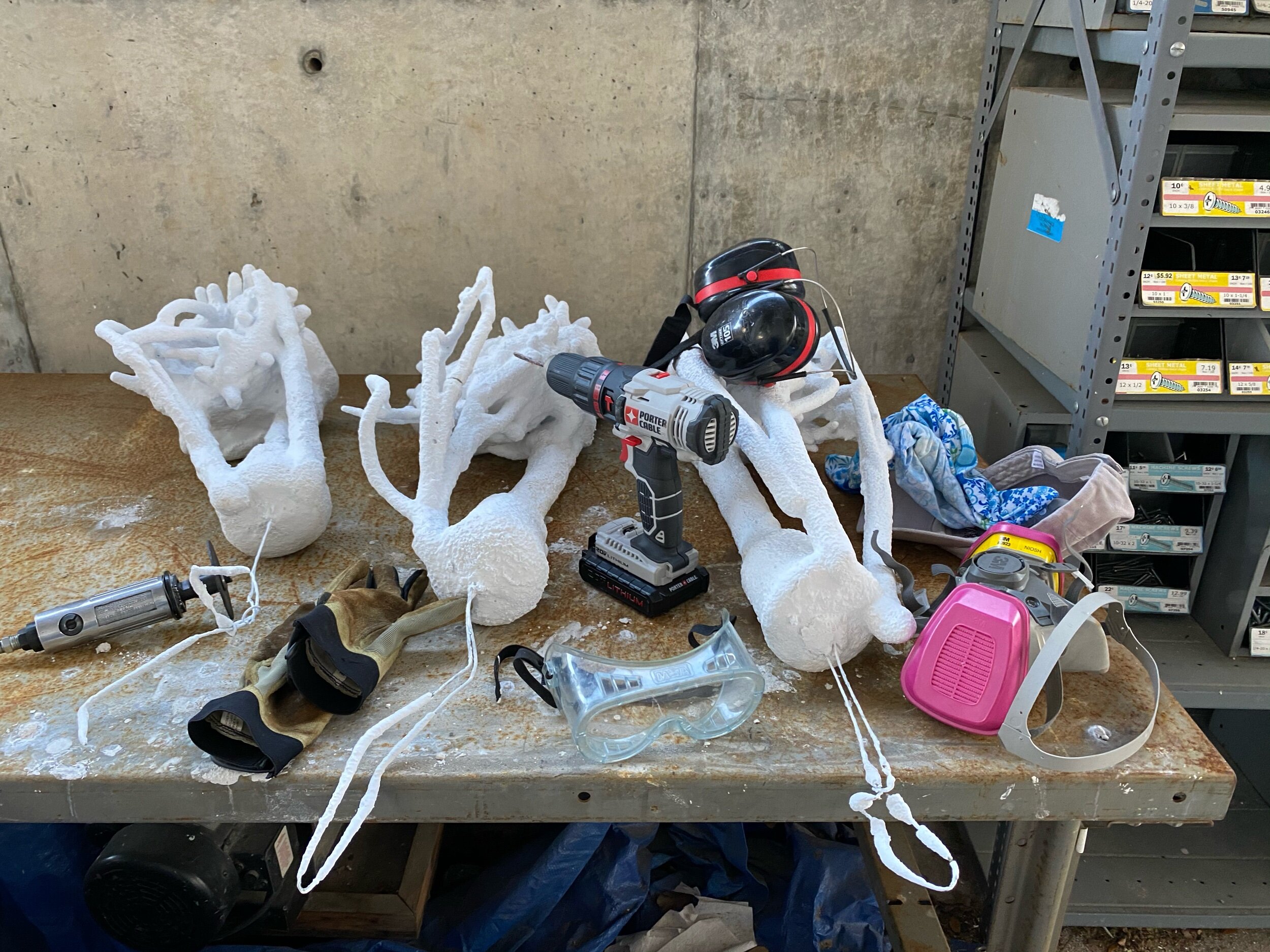
My tools to cut off the top of the cup and blind vents. The wax will drain out if the tuop of the cup. I also drill holes to keep the shell from cracking as the wax expands in the furnace.

After cutting the cup and blind vents.

The pieces at legacy as Victor is breaking off the shells.

The three nests and some small bronze casting to use for studio visit gifts.
Nash Baker is my art photgrapher, Nash lost his photography studio to a fire studio during COVID. I will wait to have these pieces photographed when he is back in operation.
My daughter special requested this piece. She asked if I could make her a sapling. My response was I could try, but the pencil size steel limits how thin I can make the tree limbs. Long story short, the sapling grew old fast. After the first coat the sapling limbs we're no longer sapling thin.

Covered in lath

Keeping an eye on my mix

The first coat - the bronze leaves are covered in green plastic to protect them.

First, I paint on the bonding liquid.

The piece is now ready for coat number 2.

Coat number 2 ✅

Here is the image edited super light in order to show the texture.

More details

Detail of upper branches

A little more concrete need under the bird.

Detail of trunk

The lower trunk and base.
The abundance of knots is evidence that this tree is the host of many insects and good bacteria. Bees and other insects use trees for nesting and receive antiviral properties from the fungus and bacteria that grow on the tree.
The hard work is done. I did a little sanding on the seat so it won’t snag anyone clothes and then I was able to get some help moving it to a place where I can stand back and look at the work.

Front and reflection in the pond

Back view

Bronze

Lovebirds back


Left side view

Left back leg

Back right leg

Another view of the back right legs

Back right view of right legs

Back branch

Back left where back branches and legs connect

Front right legs - I love their hug

the seat texture

A piece of metal that was in my Dad’s ashes and his last name - Travis carved to the right of the metal bolt. I am guessing it is from one of his four hip replacements.
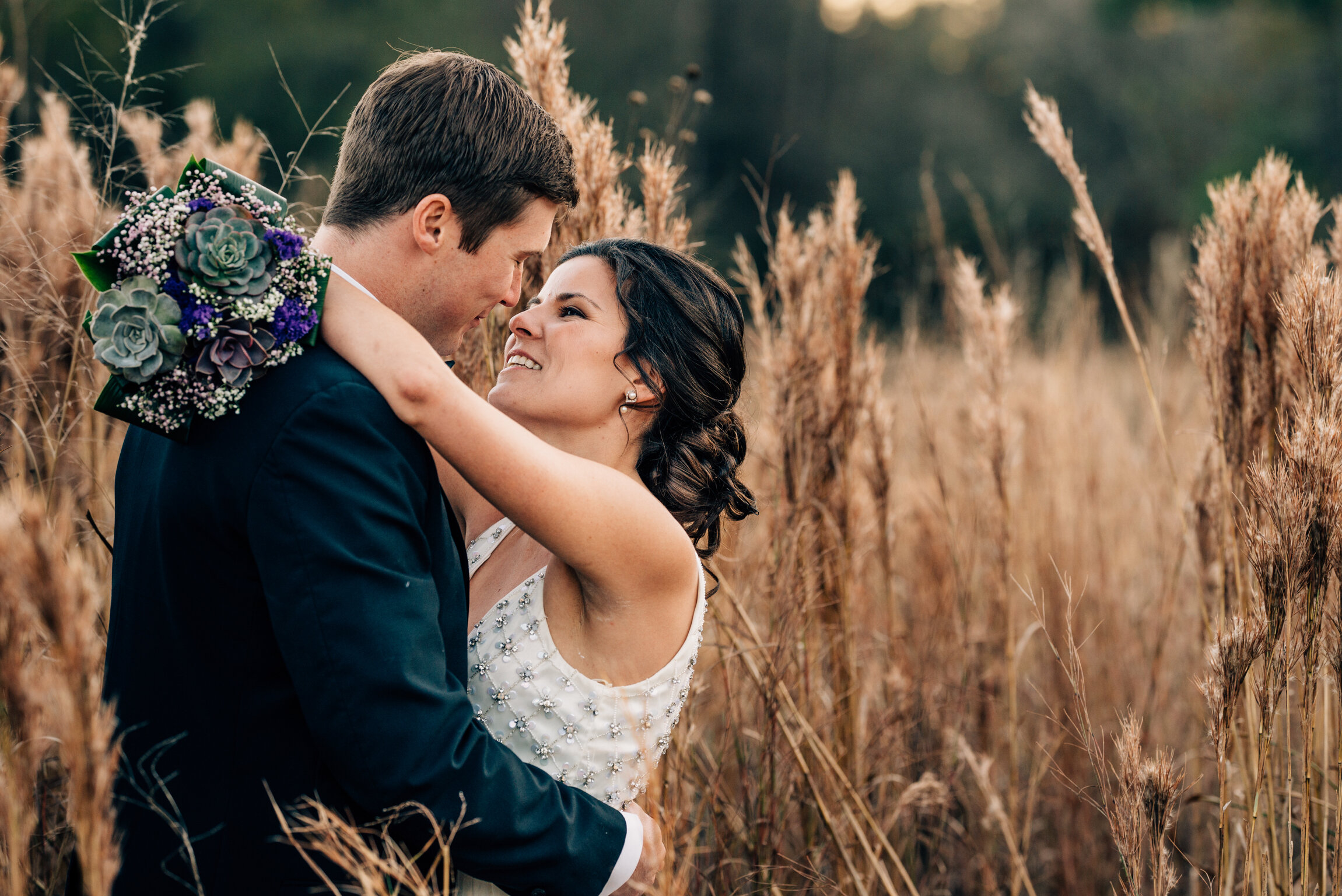
Griffin and Alex after their vows. - the lovebirds January 3, 2018
They will be in Houston for two weeks for Sage and Cameron Cuenods legal wedding vows June 12, 2020.
I Am looking forward to showing it to them. And I would like their opinion regarding a stain/patina.

Since last November I have been dropping hints to Houston Chronicle writer Molly Glentzer to write a native bee article. Earlier this week she called to talk about native bees. Some of the information I talk about when I talk about bees is alarming. She asked if I knew a locacal native bee athaurity, I did not. She said she could find one.
Here article came out today. Sadly she did not mention my bee art activism but the native bee specialist confirmed everything I have been saying. And yes It is alarming. Knowledge is power. - plant native non hybrid plants, blue, purple, yellow and white primarily. Starting the conversation with art activism.
her awesome article is below.
https://www.houstonchronicle.com/life/gardening/article/Your-Houston-garden-needs-native-bees-15287310.php

It turns out I did the first finish coat in white concrete. I have decided to put another coat on in the great concrete.

Here you can see the difference between the white and the grey Portland concrete.

I also have a repair to make on a back leg.

Repair made

The new underside top coat with personalization note for The newly weds.
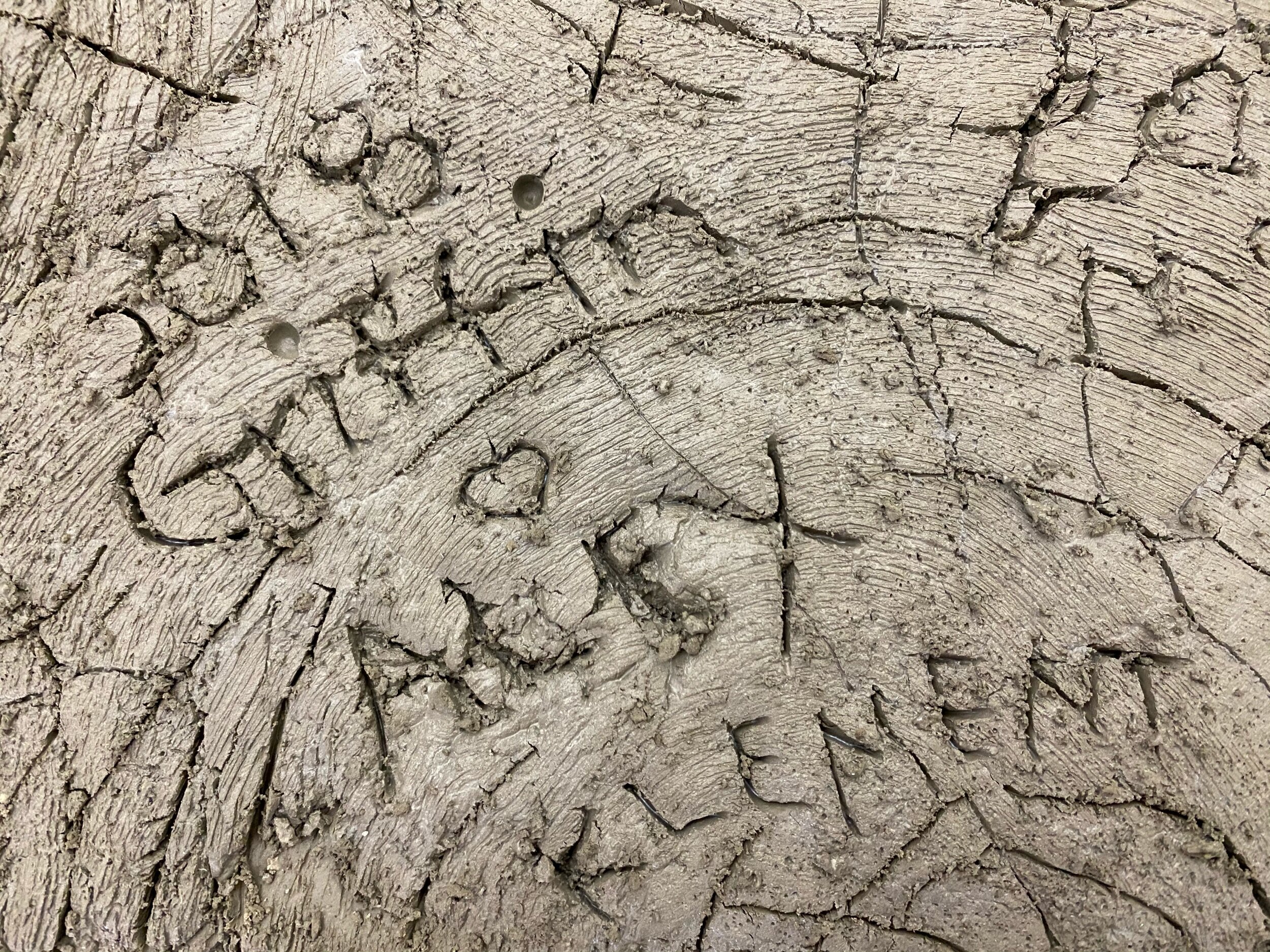
The year the married 1/3/2018 and there names griffin Joseph Klement and Alexandra Marie Groome Klement
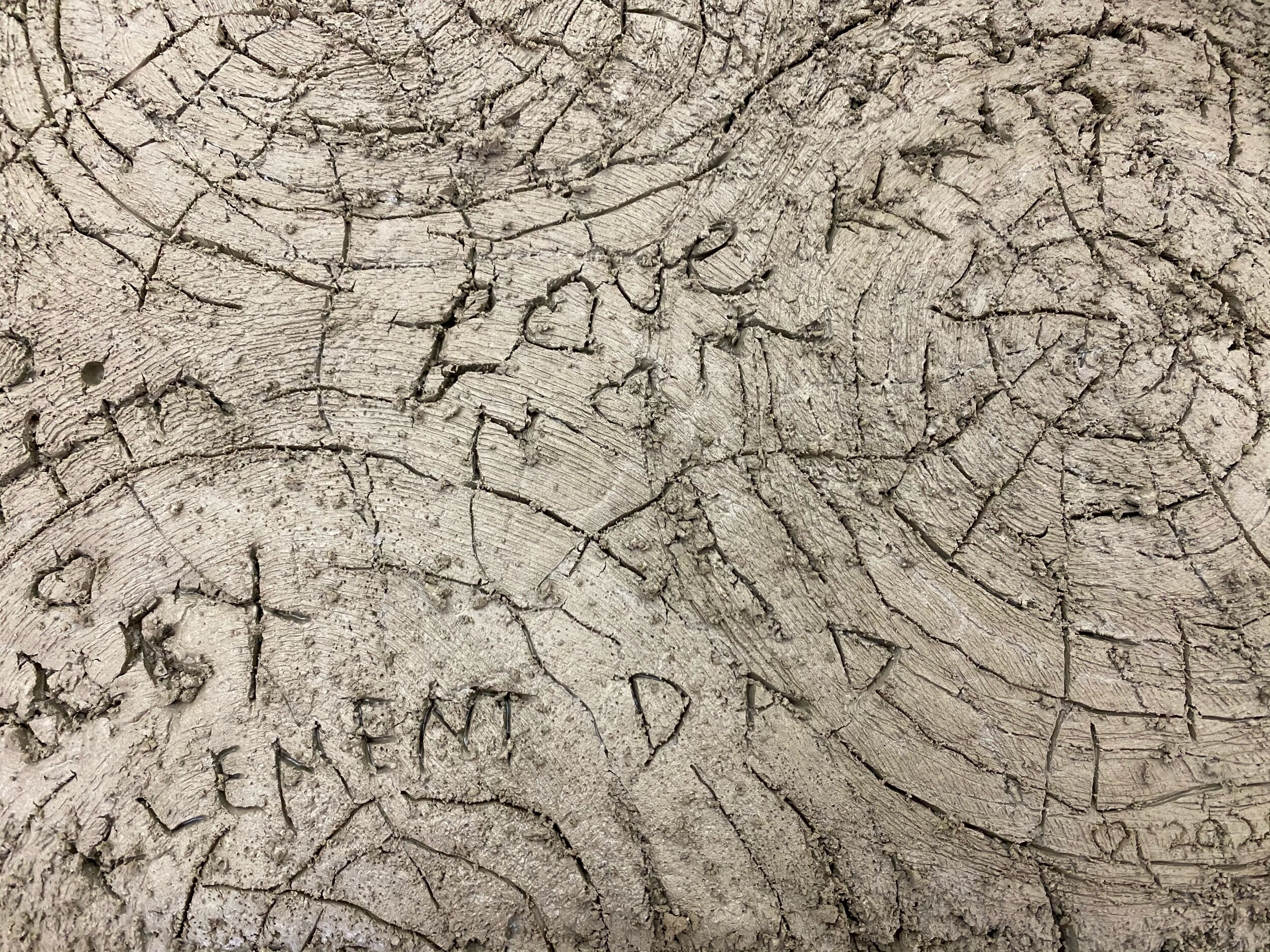
With love from me- Mom -cindee Travis Klement and Curtis Joseph Klement
The inspiration is from my grandparents yearbook page so I added my maiden name to the left of my name. I put the Klement last name between both sets of names.
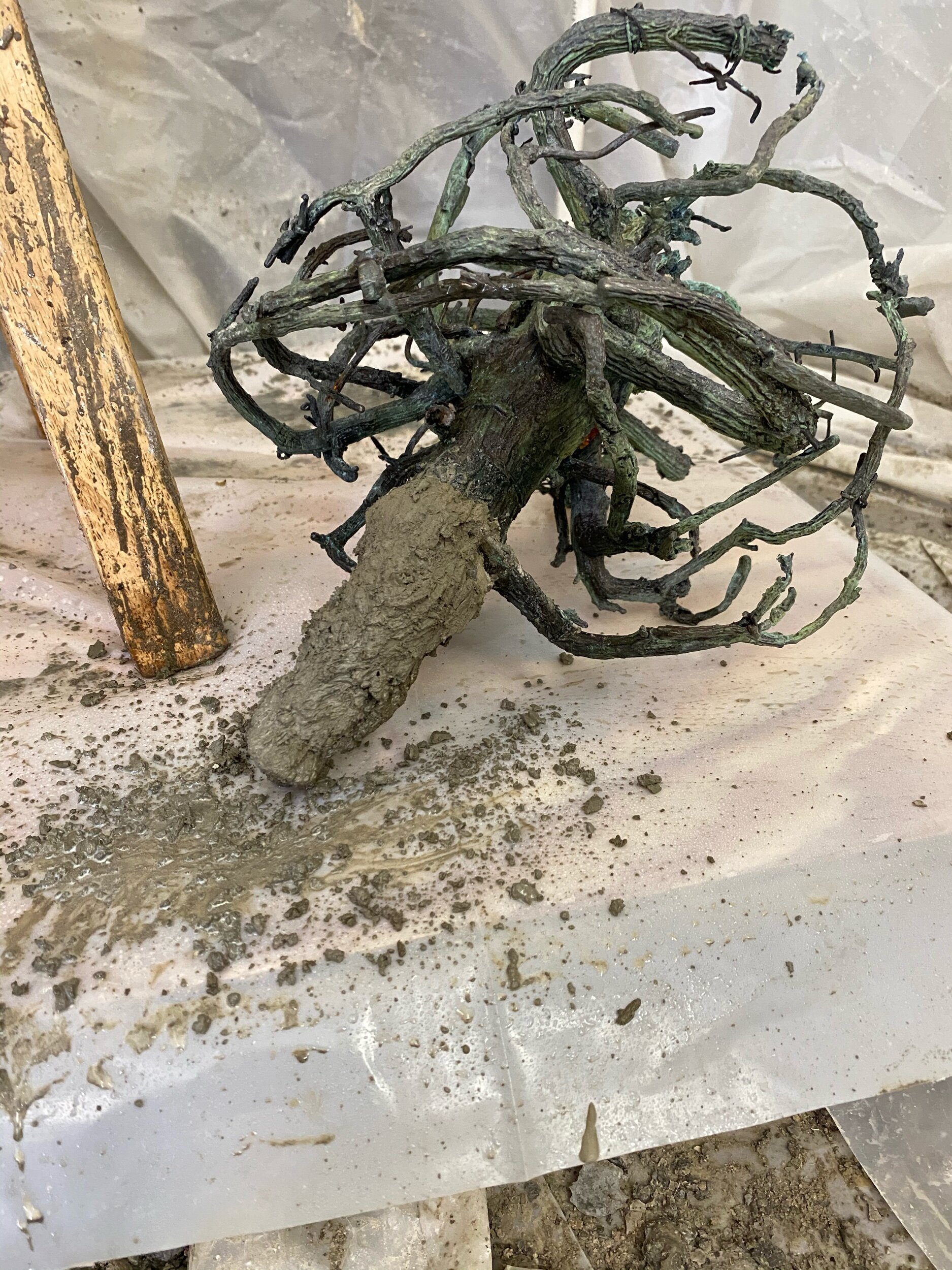
Adding a stump to this root. I am on the fence on this.


Daddy always had a few tomato plants growing in a pot. We decorated the tables with celebrity tomato plants to be taken home in by those who came to celebrate his life. We had each one in a brown bag. The same type and size of the container that one would keep a big bottle of Coors beer inside their truck. The brown bag has meaning to my siblings and me.
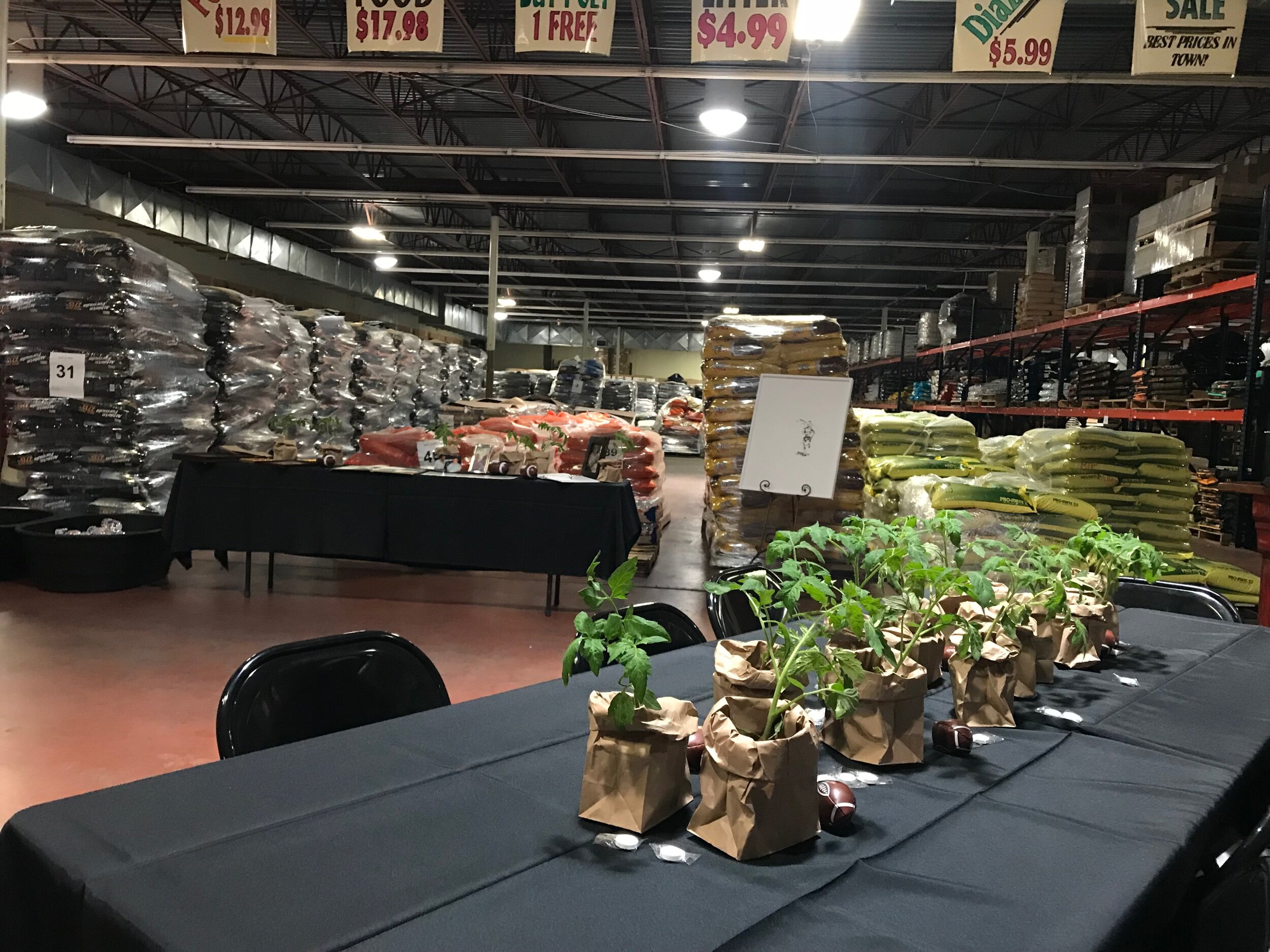
The feed store warehouse wake.

From left my oldest brother Bob, my baby sister Janet Fortune, my brother Dean and his dog Johnny and me. Front and center in the born and raised bag my father’s ashes in 3 big containers and one tiny container.
Another day of social distancing and not being able to get in my studio. Today's stitching, I added the first of several sweat bees. In reality, they are only about 1/4 ” long. They have beautiful metallic greens and blues. I am working to show more time and movement in my stitching.

I added a tiny sweat bee - he is moving fast and as a result blurry

First I cut some thread of the colors I want the bee to be.

Next I wad them up into a cocoon.

Then I untangle them into the shape of the movement of a bee.

Then I stitch them into the shape of the movement.

Bombus dahlbomii Thread on denim

Bombus dahlbomii I 30” X 44” watercolor monotypes

Bombus dahlbomii Il 30” X 44” watercolor monotypes
Earlier in the year I sent the below letter to my City council representative. She is very supportive and agreed to review the Cities landscape ordinance and bring it up to date to reflect our current environmental situation as it pertains to native bees. The bees that are endangered, the honey bee is not endangered. I anticipate that with the health scare our city is facing our bees have been put on the back burner. Since the bees can’t wait for the c virus to die down, I decided I need to act. . Below is my letter. If you agree with me we need to all become gorilla artist and install texas wildflower seeds in every vacant spot we can. See my below post for how to be a gorilla artist and save the Native bees. If you want something done do it yourself. I still have hopes our city will reimagine our urban landscape and save the bees. #bees #houston #cindeeklementart #gorillaart Scientists predict that without pollinators, human life can only continue for four years. In 2017, the U.S. Fish and Wildlife Service listed the Rusty Patch Bumble Bee on the endangered species list. The campaign to list a species as endangered is lengthy and complicated. With this system it is difficult to gauge how many species are actually endangered. Bees are responsible for pollinating 75% of the world's flowering plants; they are crucial for the production of most fruits, nuts, and berries – that our agriculture depends on pollination by bees. Rural areas are highly impacted by the unanticipated consequences of our industrial agriculture’s dependence on chemicals that weaken bee’s immune systems. Urban bee populations can be more diverse than in rural areas. Researchers are finding in cities such as Chicago, Berlin, Berkley, and Melbourne that have reimagined their parks, neighborhoods, city centers, vacant lots, street medians, and rooftops planted with native flowers, grasses, and fruit, and vegetables support healthy, vibrant wild native bee populations. There are four thousand native bee species. They pollinate over three hundred times more effectively than honey bees. For example, A single female Leafcutter Bee visits 100,000 plus blossoms per day whereas a honey
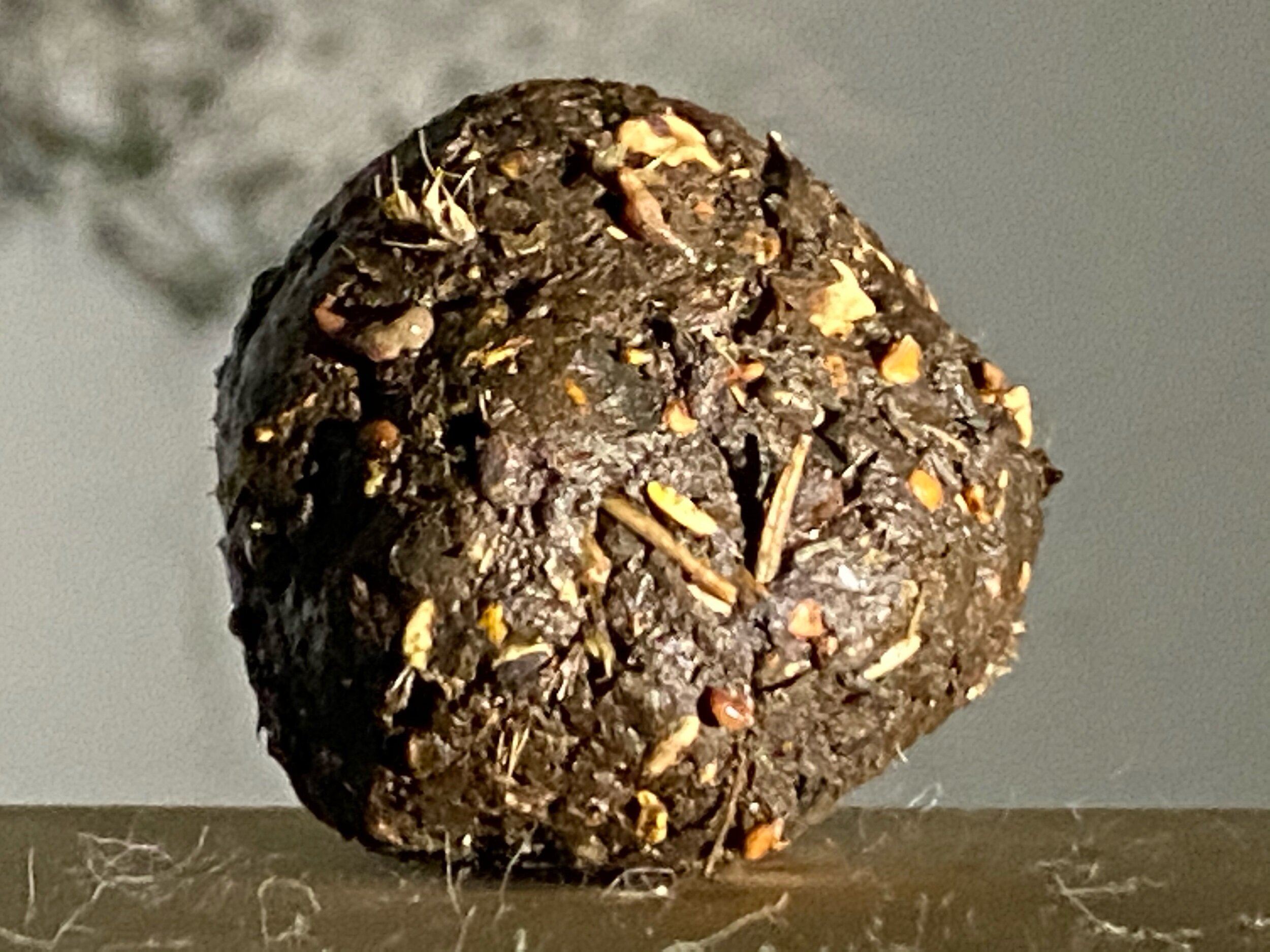

Mix native wild flower or grasses seeds with soil. I am using a handful of compost from my bin.

Wrap it up so you can carry it and not get your hand muddy.

Find a place to throw it that will not be mowed. I picked behind this chain link fence, in the parking lot of my art studio.

Here she lays.

A closer look at - native wild flower seed bomb.

Three weeks later.
There are so many weeds sprouting up it is hard to see my seed bomb. But I see it. It does not have any blooms yet but my fingers are closed it will.
Since we are in quarantine I decided at this time to not make a bunch of bombs to share with others. I would love to share but I am erroring in the side of caution. i put the rest of my wild flower seeds in my flower beds that I needed more plants.
30” X 44” Lenticular in In the words of Paul Mc Cartney and the Beatles in “Let it Be” I think of Mother Mary as mother nature. Some day I would like to have a children’s choir sing “Let it Be” with my shadow piece,” World of Hum.”. But for now it is Spotify and a lenticular in my studio.
7 days left to rip and wrangle rusted wire cloth, then delicately stitch the wire fragments into biospheres of frail and vulnerable abstract wild bees and organic shapes. Then coat hydro stone and cast shadows, to kinetically unveil the unintended consequences of forcing natural processes into an industrial model. Then pack, transport, unpack, install for 21 days, and open........ find more locations to install......... rinse and repeat.




Bombus Affinis II compound eye detail.
I ran into the print making room to drop off some new paper. I took the opportunity to see how the last 6 compared to each other and how multiple bees might look together. I will do one more experiment and the plan the grouping.

Artspace 111 report the the artist that Hilde selected 59 artist out of 1300. Man! I feel lucky to be included.



My daughter special requested this piece. She asked if I could make her a sapling. My response was I could try, but the pencil size steel limits how thin I can make the tree limbs. Long story short, the sapling grew old fast. After the first coat the sapling limbs we're no longer sapling thin.

Covered in lath

Keeping an eye on my mix

The first coat - the bronze leaves are covered in green plastic to protect them.

First, I paint on the bonding liquid.

The piece is now ready for coat number 2.

Coat number 2 ✅

Here is the image edited super light in order to show the texture.

More details

Detail of upper branches

A little more concrete need under the bird.

Detail of trunk

The lower trunk and base.
The abundance of knots is evidence that this tree is the host of many insects and good bacteria. Bees and other insects use trees for nesting and receive antiviral properties from the fungus and bacteria that grow on the tree.
When shopping for my home, I love to go to flea markets and garage sales. I often buy broken things. A crack here there does not bother me. When I first started making #fauxbois furniture, I was always checking out concrete objects. I ended up with two concrete chickens; one was minus its head, and its tail feathers were damaged. Instead of throwing away the broken chick, I hung on to both - something about “like a chicken with its head cut off” was intriguing. That headless chicken hung around my garage for years, it made a good weight. When I started working in bronze, one of the first things I did was up-cycle the headless chicken with a new bronze head and tail. I sculpted the head and tail feathers in wax mixed with grits and grass. I made a mold of them, and then burned out the wax grass and grits and then cast them I bronze. I like the idea of giving new life to objects no one wants. I think these chicken could be seen as my first environmental pieces. They are not only upcycled chickens, but all birds also play a critical roll in nature. Fowl keep pests numbers in balance. All living organisms are connected.

